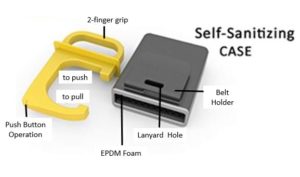IoT analytics allows organizations to leverage the huge data amounts generated by the Internet of Things devices. Internet of Things analytics is, in most cases, considered a big data subset. This big data subset involves combining heterogeneous streams and converting them into accurate and consistent insights.
Insights that IoT streams generate can help businesses improve numerous aspects of their everyday operations. But, it’s often complex to integrate the different types of Internet of Things devices with existing analytics tools and ecosystems. That is why organizations are increasingly using a technology created for gathering and analyzing data from sensors.
Organizations install sensors on vital manufacturing equipment, smart meters, pipelines, delivery trucks, and weather stations, among others. By doing so, they can quickly and properly integrate IoT devices with analysis tooling. IoT analytics can help numerous other industries, including data centers and healthcare facilities to better leverage their data.
Benefits of Using IoT Analytics
The use and adoption of IoT has been on the rise. But, while the number of connected IoT devices increases, businesses struggle to manage the massive amounts of generated data. The data sets are usually more complex since data gathered from IoT is less structured.
IoT analytics tools allow businesses to leverage complex Internet of Things datasets successfully. When businesses are well-equipped to understand IoT data, they can increase their revenues by improving products and services.
Since consumers are connected to the internet, businesses can optimize their products and services according to the needs and requirements of their customers.
Instead of gathering and trying to use all data, IoT analytics tools only collect the most important data and analyze it quickly. After that, they provide insights relevant to the services and products.
IoT analytics helps organizations save valuable time, minimizing tasks related to data source integration. The outcome is a data analytics pipeline that offers access to data. Any concerned party in the organization can use the outcome to find solutions and gain insights.
IoT Analytics Strategy
An excellent strategy can prove to be important when implementing Internet of Things analytics. With a good strategy, any IoT project can be successful. Various ways exist to adopt IoT analytics.
The choice depends on the specific needs of the business and the industry. Irrespective of individual needs, certain best practices to be followed universally are available. They include:
- Enforce security: Use safeguards and policies to protect data and prevent its loss or exploitation.
- Centralize data: Analyze IoT data as well as other data sources for deeper understanding.
- Encourage workers: Encourage employees to leverage the Internet of Things data analysis, doing their explorations into how and what can be gained from the IoT data.
- Match analysis elements: Determine the data analysis location based on criteria like data type, existing analytics infrastructure, and analysis type.
- Leverage automation: Leverage data profiling and cleaning to ensure data accuracy and quality and minimize the number of errors.
The Internet of Things can potentially and massively transform how businesses operate. However, implementing Internet of Things solutions can prove to be challenging and complex.
By starting small, partnering up, thinking big, clarifying organization outcomes and ROI, leveraging big data, prioritizing security, and creating an architecture for analytics, businesses can successfully deploy Internet of Things solutions and reap all the benefits of this technology.



